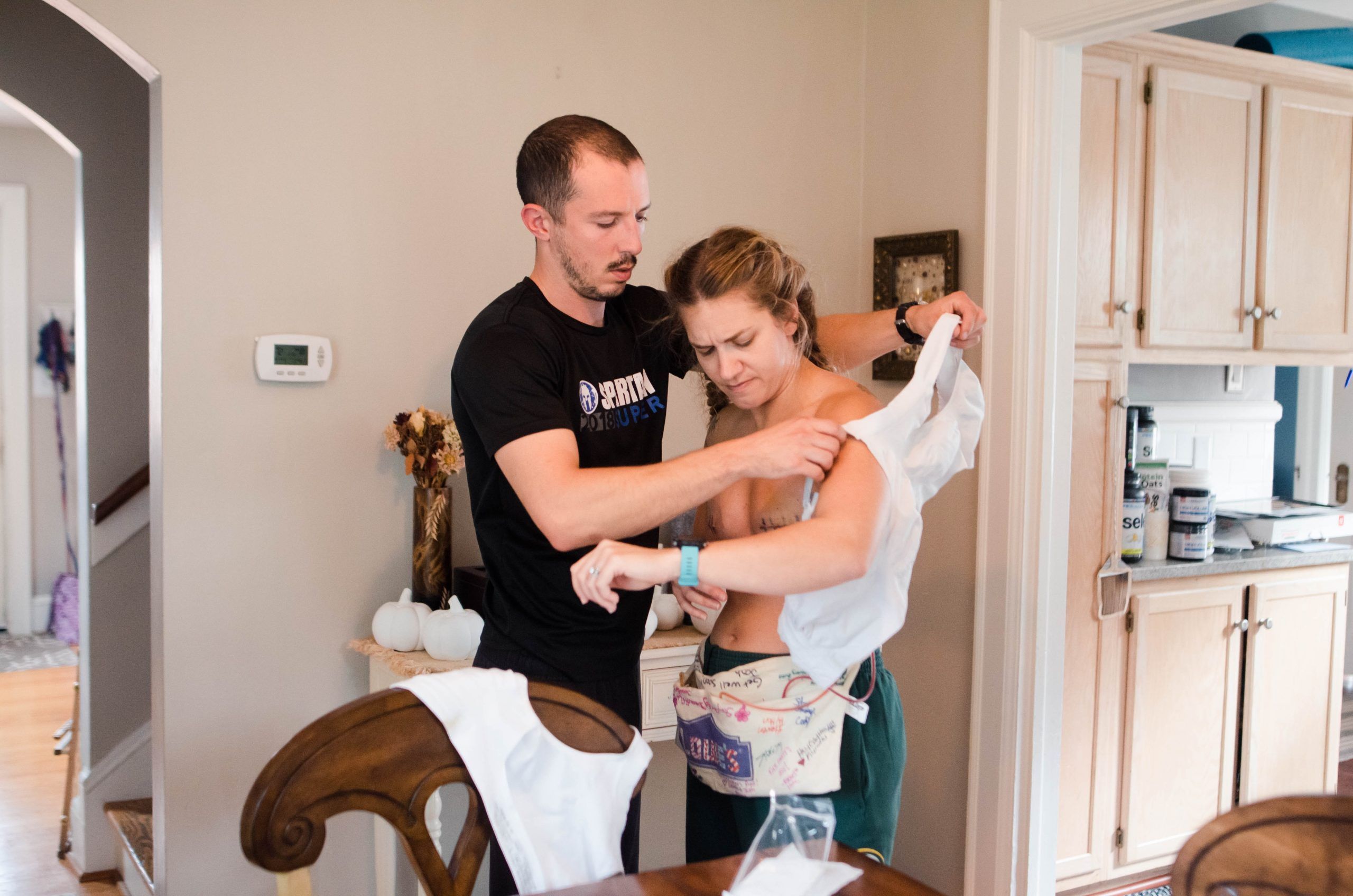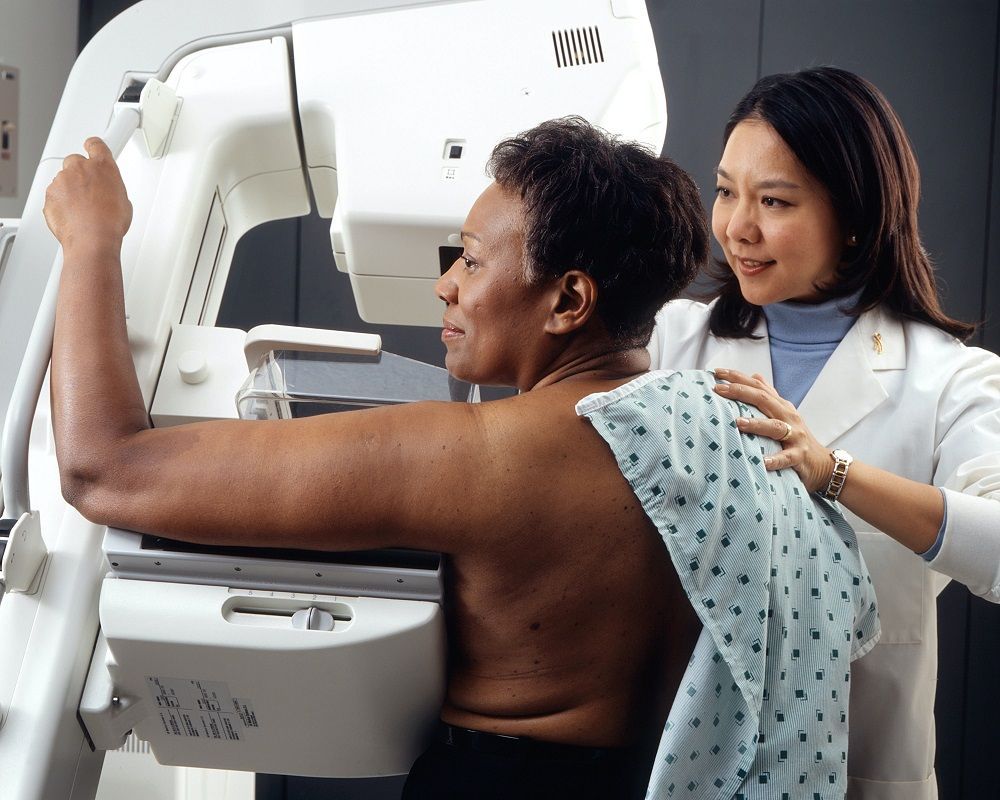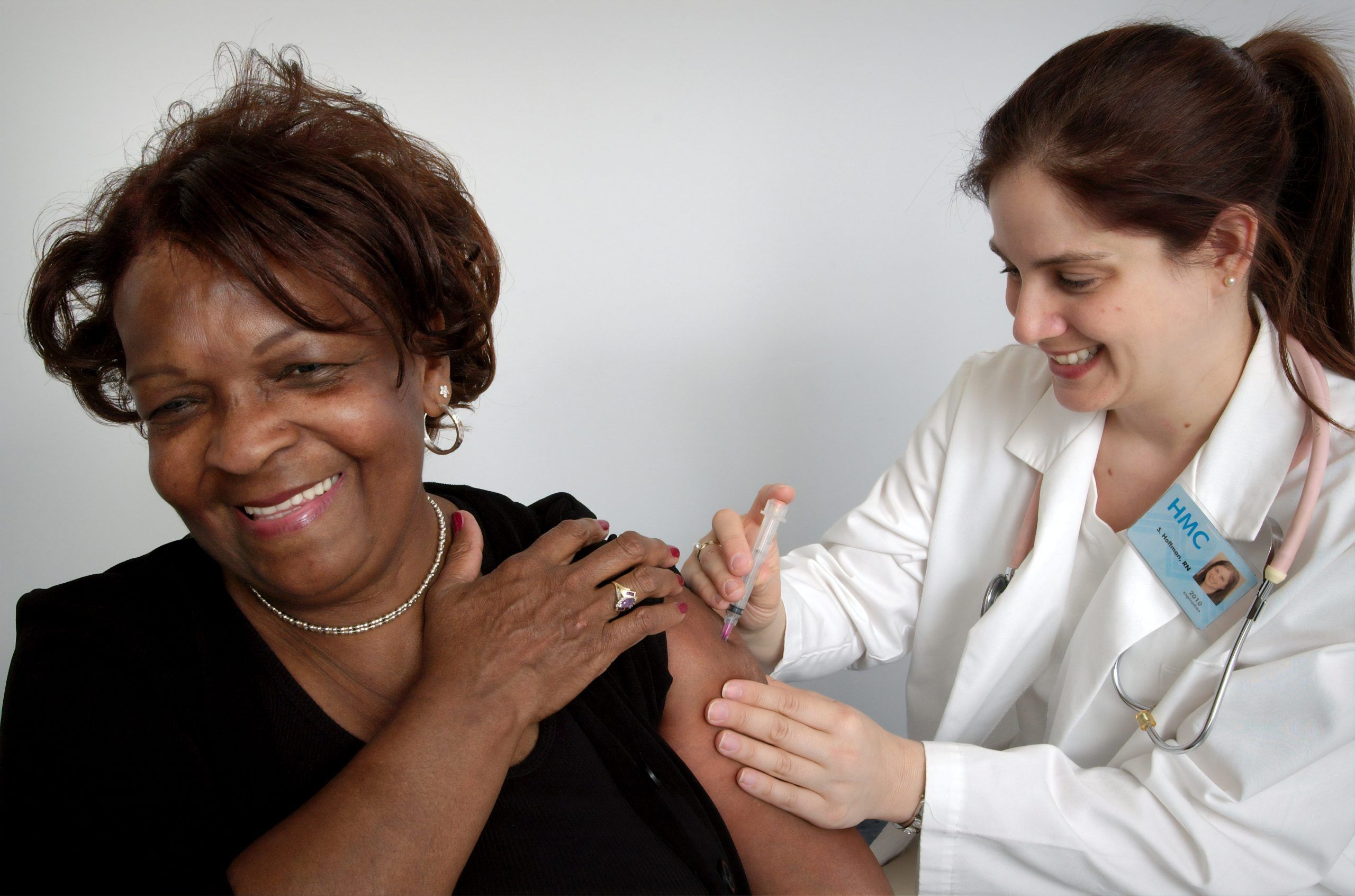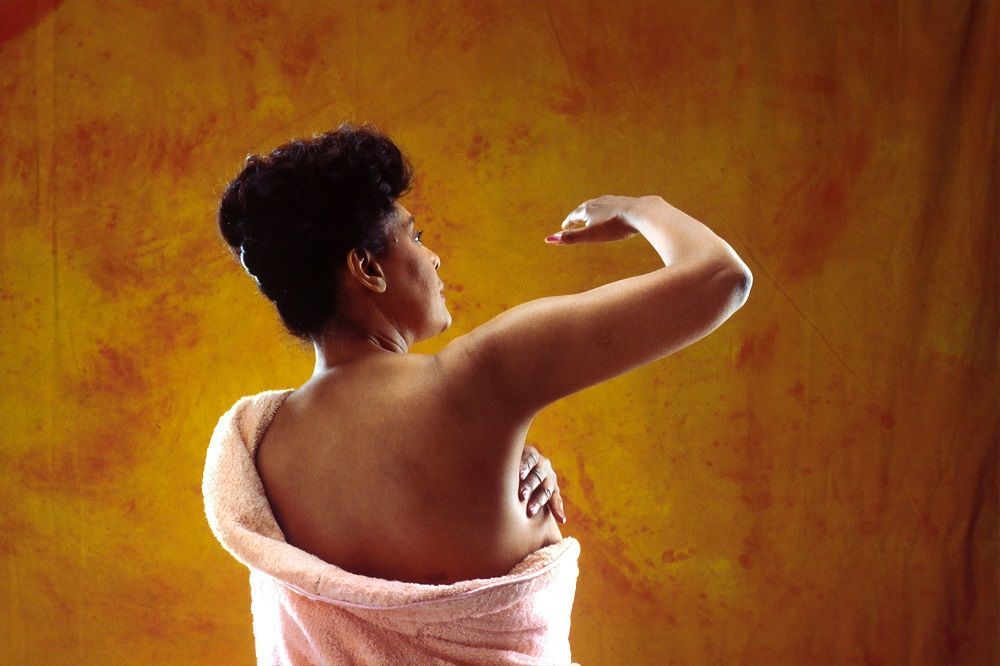

Breast cancer treatment includes an array of options. The one that’s right for you or your loved one depends on several factors, such as the stage of cancer, a person’s age, and overall health. Treatment options also depend on the type of breast cancer, the size of the tumour, how quickly it’s growing, and what types of “biomarkers” (or proteins) are present in the breast cancer.
This explainer covers the basics of standard breast cancer treatment, as well as clinical trials.
How is breast cancer treated?
There are six standard types of treatment for breast cancer: surgery, radiation, chemotherapy, hormone therapy, targeted therapy, and immunotherapy.¹ Your doctor might suggest combinations of these therapies or “adjuvant” (additional) therapies, which are used after the primary therapy to help reduce the chances of cancer coming back. Your doctor may also suggest that you participate in a clinical trial, which is a research study that tests new cancer treatments.
The options for treating men with breast cancer are similar to those for women. A man will typically have surgery followed by hormone therapy, chemotherapy, or radiation.
It is important to mention here that some groups have a harder time accessing breast cancer care than others. Disparities in care negatively affect people who are Black and Latinx, poor, uninsured, LGBTQ+, older, or living in rural areas.²
Surgery

Surgery is often recommended for the treatment of breast cancer. There are several different types; the surgery that’s right for you will depend on your cancer’s stage and type.
Sentinel lymph node biopsy
The sentinel node is the lymph node most likely to receive the spread of cancer from the primary breast tumour. A sentinel lymph node biopsy is the surgical removal of that node to check it for cancer cells. If cancer is found, your doctor will remove more lymph nodes and check those as well. Depending on the results of this biopsy, your doctor will then recommend breast conserving surgery or mastectomy.¹
Breast-conserving surgery
In this kind of operation, your doctor will take out the cancer but will not remove the breast. In addition to removing the cancerous cells, your doctor may remove additional surrounding tissue and/or lymph nodes. This kind of breast conserving surgery is called a lumpectomy, partial mastectomy, segmental mastectomy, quadrantectomy, or breast-sparing surgery.¹
Total mastectomy
A total mastectomy (also called a simple mastectomy) removes the whole cancer-containing breast. Your doctor may or may not remove surrounding lymph nodes to check for the spread of cancer via a separate incision.¹
Modified radical mastectomy
This type of surgery removes the entire breast, but also includes the removal of most of the underarm lymph nodes. It preserves the chest muscles underneath the breast.³ This is the most common surgery in men with breast cancer.?
Radical mastectomy
This is a rare surgery in which your doctor will remove the breast(s) containing cancer, all the underarm lymph nodes, and the chest muscles.³
Breast reconstruction surgery
Some breast cancer patients opt to have their breasts reconstructed during or after surgery using tissue/fat transfer or implants.
Surgery for breast cancer can be an emotionally taxing experience. Surgery often results in an altered appearance, including scarring. Some people are surprised by how much meaning they’d attached to their breasts, and how losing them causes anger, grief, and a shift of identity. It’s important to remember that however you’re feeling is valid and that it’s more than OK to reach out for help when you need it.
Radiation therapy

Radiation therapy uses high-energy X-rays to kill cancer cells or stop their growth. There are two kinds of radiation used in the treatment of breast cancer and what type you receive depends on the stage and type of cancer.
- External: This kind of radiation uses a machine to target the area(s) of your body that has cancer.¹
- Internal: This kind of radiation uses a radioactive substance delivered inside your body directly into or near the cancer cells via needle, wire, or catheter. Internal radiation is used when breast cancer has spread to the bones.¹
Radiation can cause side effects, including tissue inflammation, skin changes (redness, soreness, feeling like you’re sunburnt), and fatigue.
Chemotherapy
Chemotherapy uses medication orally or via injection that stops breast cancer from growing by killing cancer cells or halting their division. Chemotherapy reaches cells all over the body (versus targeted therapy, which we’ll discuss later). Because of this, chemo can damage or kill healthily-dividing cells along with the cancer-causing ones.¹
This treatment can cause numerous side effects, including:
- Hair loss
- Nausea
- Appetite changes
- Fatigue, anaemia
- Increased risk of infection
- Mouth and throat sores
- Bruising and bleeding issues
- Mood changes
Chemo can continue to cause changes even after the therapy is over, including early menopause, blood clots, heart failure, and in rare instances, other cancers.
Hormone therapy

Certain hormones (like estrogen and progesterone) can help cancer grow. Hormone therapy is a type of breast cancer treatment that removes or blocks those hormones. What type of hormone therapy you receive depends on the stage and type of breast cancer and may include medication, surgery, or radiation.
A common hormone therapy is tamoxifen, an oral medication. It is used in treating hormone receptor-positive breast cancers, which are breast cancers that contain certain estrogen or progesterone-receptor proteins. Tamoxifen blocks the effects of estrogen and can be used at any stage of cancer.¹
Because tamoxifen acts on cells all over your body, it can increase the risk of endometrial cancer (cancer in the lining of the uterus), so doctors recommend yearly pelvic exams for women on tamoxifen. Women should also report any abnormal vaginal bleeding to their healthcare provider.
Women may experience other side effects of hormone therapy, including fatigue, digestive system changes (including constipation or diarrhoea), hair thinning or loss, brain fog, loss of bone density and bone fractures, weight changes, and menopause-like symptoms. In men taking tamoxifen, nausea, vomiting, impotence, and loss of libido are among the possible side effects.
Targeted therapy
Targeted therapy uses medication or other types of treatment to attack specific cancer-causing cells (versus chemotherapy, which can’t distinguish between cancer and healthy cells). Because targeted therapy harms healthy cells less than chemo does, it often comes with fewer side effects.
Types of targeted therapy include:¹
- Monoclonal antibodies, which are immune system proteins given via infusion
- TKIs (tyrosine kinase inhibitors), drugs that block tumours’ ability to grow
- CDK (cyclin-dependent kinase) inhibitors, which block certain proteins needed for cancer cells to grow
- mTOR (mammalian target rapamycin) inhibitors, which block a cancer-fueling protein and prevent tumour-growing blood vessels from developing
- PARP inhibitors, which kills cancer cells by blocking their ability to repair themselves at the DNA level.
Side effects of targeted therapy include nausea, diarrhoea, fatigue, rashes, and oral sores. In rare instances even after you’ve finished this kind of treatment, it can cause heart problems including heart failure.
Immunotherapy

Immunotherapy treats breast cancer using your body’s own immune system, which finds “outsiders” and attacks. Sometimes your immune system has trouble finding and attacking cancer cells, either because the cancer cells are similar to your healthy cells, or because cancer cells have sneaky ways of camouflaging themselves.¹
Also called biologic therapy, immunotherapy works in two ways:¹
- By stimulating your immune system so that it can more efficiently find and attack cancer cells
- By using lab-created substances (like T-cell therapies, checkpoint inhibitors, immunomodulators, antibodies, or vaccines) that help your immune system find and attack cancer cells
Common side effects of immunotherapy include skin reactions at the point of injection (redness, itchiness, rashes), flu-like symptoms, nausea, muscle and joint pain, fatigue, shortness of breath, and headaches.¹
Clinical trials
Clinical trials are research studies where scientists explore new ways to find, diagnose, prevent, and treat cancer, as well as how to treat the side effects of cancer therapies.
Researchers spend many years doing lab work as well as animal studies before a clinical trial involving people can begin. Your doctor may recommend you take part in a clinical trial no matter your stage of breast cancer.¹¹
You can also look for clinical trials near you via the National Cancer Institute.
If you take part in a clinical trial, you are not only helping determine possible new treatments for your own cancer but for future breast cancer patients, as well.¹²
Recap
No single breast cancer treatment is the right fit for everyone. Breast cancer treatment is tailored to a person’s needs based on a number of factors, including the type and stage of cancer. Standard therapeutic options include surgery, radiation, chemotherapy, hormone therapy, targeted therapy, and immunotherapy. You and your team of healthcare providers will develop a plan of care that’s best for you. Naturally, you’ll have questions. Be sure to ask about the goals of treatment, as well as what you can do to prepare ahead of time and what to expect during and after treatment.¹³
Sources:
- National Cancer Institute. Breast Cancer Treatment (Adult).
- Wheeler SB, Reeder-Hayes KE, Carey LA. Disparities in breast cancer treatment and outcomes: biological, social, and health system determinants and opportunities for research. Oncologist. 2013;18(9):986-993. doi:10.1634/theoncologist.2013-0243National Library of Medicine.: Disparities in Breast Cancer Treatment and Outcomes: Biological, Social, and Health System Determinants and Opportunities for Research
- MedlinePlus. Mastectomy.
- National Cancer Institute. Male Breast Cancer Treatment (PDQ®)–Patient Version.
- MedlinePlus. Radiation Therapy.
- American College of Obstetricians and Gynecologists. Tamoxifen and Uterine Cancer.
- National Cancer Institute. Hormone Therapy for Breast Cancer.
- National Cancer Institute. Targeted Therapy to Treat Cancer.
- Masoud V, Pagès G. Targeted therapies in breast cancer: New challenges to fight against resistance. World J Clin Oncol. 2017;8(2):120-134. doi:10.5306/wjco.v8.i2.120
- National Cancer Institute. Immunotherapy Side Effects.
- National Cancer Institute. What Are Clinical Trials?
- American Society of Clinical Oncology. Breast Cancer: About Clinical Trials.
- American Society of Clinical Oncology. Breast Cancer: Questions to Ask the Health Care Team.
This story first appeared on www.health.com
(Credit for the hero and featured image: Ave Calvar Martinez/Pexels)
© 2021. Health Media Ventures, Inc. . All rights reserved. Licensed from Health.com and published with permission of Health Media Ventures, Inc. . Reproduction in any manner in any language in whole or in part without prior written permission is prohibited.
Health and the Health Logo are registered trademarks of Health Media Ventures, Inc. Used under License.

